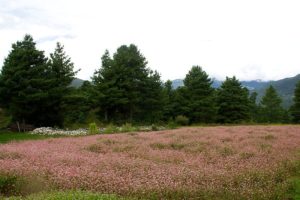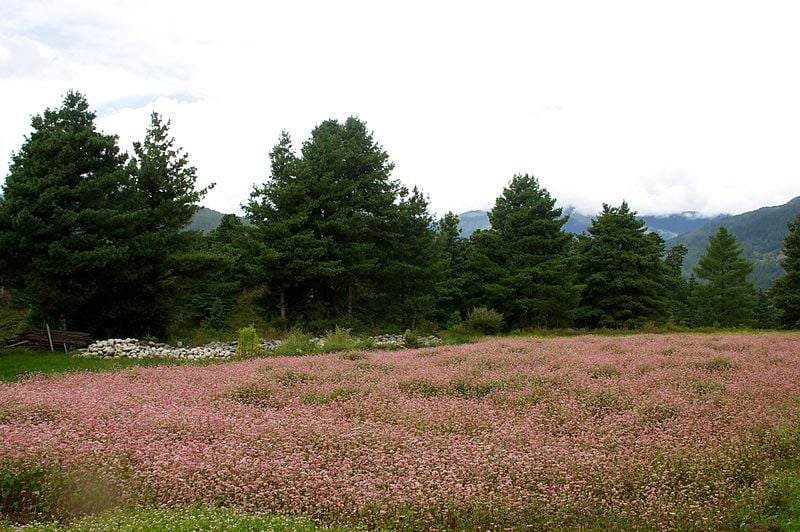The scenes are unsettling: Gallon after gallon of milk discharged onto spick-and-span floors. If ever there was a time to cry over the spilled, imbibe-able liquid, this would be it.
Uneaten food crops left in fields to rot. Food bank and grocery store inventories mostly or wholly expended, shelves close to or completely emptied, leaving those who are in need to seek essential sustenance (read: “food”) elsewhere, wherever, whichever the case may be.
Which is why options like Community Supported Agriculture programs and the like more or less pick up where traditional, more mainstream farming leaves off. And, the impetus for this thread’s being.
Community Supported Agriculture
In the past on the Air Quality Matters blog, only brief mention of the concept known in food-growing and food-distribution circles as Community Supported Agriculture or CSA has been made. Starting with this thread, that all changes.

Community Supported Agriculture is the name given to a practice that involves the participation of people within a community, giving them the opportunity to grow food for themselves and others and all done at the community or neighborhood level. What CSA is in essence is shared farming space. The people doing the growing maintain a close, personal tie to the land on which the edible crops are grown and ultimately consumed.
Since operations are local, this provides many consumers with grown product that, to them, depending on their particular circumstance, may not be as readily available or otherwise, meaning, in this case, being completely unavailable. There is no question that the CSA endeavor is a win-win solution for many.
During trying times conditions can get especially tough. It is at such times that CSA’s can fill in when other sources might not be able to adequately provide the supply to meet demand.
‘Natural farming’
“Natural farming”: What exactly is it?
It’s all about care for the environment. In other words, farming sustainably leaving as little a negative footprint on Earth as possible.1

Like the name suggests, “natural farming” means growing practiced naturally, that is, sans any chemical fertilizer, herbicide, insecticide or pesticide use at all – none.
An example of a “natural” pest-control method is via the utilization of on-farm frogs as a means to help keep insect populations down.
Between-row plantings like that of buckwheat, for instance, could be used to help keep weeds at bay.1
On-farm activities, meanwhile, may all be done by hand or employ the use of oxen, horses, etc. to assist with pumping water for irrigating, plowing fields for planting or in providing manure to fertilize soils even. It just depends.
One farm’s CSA and organic ‘hand-in-hand’ approach
In “California grower favors organic practices,” in the Jan. 2009 Vegetable Growers News issue, detailed was when and why Madera County’s T&D Willey Farms went organic. As for when, that was back in 1987.2
As to why that route was chosen, what it essentially came down to is this: “Getting their start in conventional farming, the Willeys [Tom and Denesse] went organic because, even after a short time, Tom began to doubt the efficacy of the chemical approach he had been adhering to. As a result he began to look more closely at organic farming as a viable substitute.
“In farming conventionally, ‘I had to put more chemical inputs into my production system every year to try to achieve the same kind of results as in the previous year,’ Tom said. ‘I began to believe that my system was slipping backwards.’”
Once going the organic route, crop yield and produce quality both subsequently improved.
And to what could this be attributed?
“‘My belief is that the higher quality organic systems are evolving from a much greater emphasis on enhancement of soil microbiology,’ Tom said. ‘Add to this the importance of using compost and cover crops, and weighing very carefully the way your tillage system is managed so that your water and oxygen availability to the soil is utmost, can’t be emphasized enough. That emphasis, plus the same on crop diversity and that of the insect world aboveground, provides the superior nutrition plants need – the basis for the best kind of disease and insect control.’

That’s but the half of it. The other half, of course, is the CSA aspect.2
Anywhere from around 75 to 80 percent of all on-farm produce headed to distribution, retail and restaurant supply.
What remained, at that time the 20 or so percent, went the way of CSA. In all, a delivery network comprised of roughly 850 participating households “within a 50-mile radius of the farm” were enrolled in the program.
Notes
- Alan Kandel, “Five-acre California farm offers numerous crops,” Vegetable Growers News, Great American Publishing Company, Sept. 2008, p. 25
- Alan Kandel, “California grower favors organic practices,” Vegetable Growers News, Great American Publishing Company, Jan. 2009, pp. 16, 17
Images: U.S. Navy photo by Greg Vojtko (upper); Mario Biondi writer (middle); Scott Bauer, United States Department of Agriculture (lower)
This post was last revised on Apr. 22, 2020 @ 8:18 a.m. Pacific Daylight Time.
